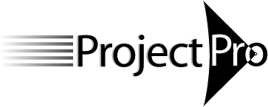Schedule Improvement
ProjectPro has performed over 1,000 schedule evaluations and certifications. We have captured the best practices of scheduling with MS Project in the book “Forecast Scheduling with Microsoft Project”. We can help you:
- Save time your people spend in MS Project on scheduling projects
- Improve quality of your schedules such that they provide the business benefits you are looking for
- Elevate the level of scheduling maturity in your organization
We treat scheduling as building a valid, robust and dynamic model of your project; a model that continues to forecast your project in terms of time and cost while executing the project. The schedule as a dynamic model of your project allows you to compare against the original plan, the baseline, to determine corrective actions in a timely fashion. A dynamic model allows you to develop what-if scenarios quickly to find the best corrective action efficiently. The result will be that you bring in your project in a timely fashion. When project managers adopt our practices, executives will see that more projects are delivered on time and within budget.
A typical consulting engagement will look like this: One of the first things we will work with you on is determining what goal you have with scheduling projects. In increasing order of complexity:
- Model Time: this is also known as 'duration-based' scheduling: you just enter Deliverables, Durations, Dependencies and Deadlines into MS Project without entering start and finish Dates. We call this '4D-1D' scheduling.
- Model Workloads also: this is also known as 'effort-based' scheduling: you start with entering the activities that create the deliverables, then you add effort estimates(person hours/days) and assign resource to each activity. This will produce workload charts (resource histograms) enabling you to realize resource management and demand management.
- Model Cost also: You add to the workload model the cost rates of all your inputs, any rate escalations and accrual types. The result is a model that dynamically forecasts how much your project will cost and when you need the funds to be available for financing your project.
After determining your goal, we will select from our 130-point schedule checklists the checks that are relevant for your goal and start improving the project schedules. Within several weeks, you should start noticing the difference this will make in terms of accuracy and reliability of the information to support decision-making.
